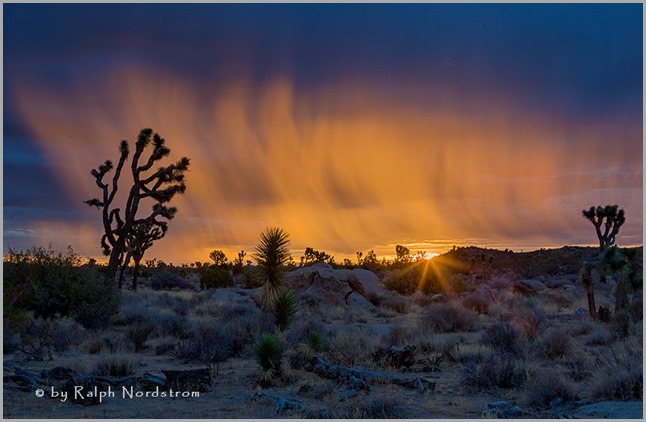It was pitch black when we arrived. Not a single star was visible in the heavens. It was overcast and the prospects of a spectacular sunset or even a good one were not very high. It all depended on whether the clouds extended beyond the horizon, all the way to the Colorado River, 110 miles to the east. One can always hope. Dawn photographers are always filled with hope.
Then there was a gentle tap on my cheek. I must be imagining things. And then a phantom spot materialized on my glasses. “Hey guys, it’s starting to rain. Cover up your gear,” I called. But there was no way a little rain was going to deter us. So we started wandering around in the gathering light, looking for compositions still keeping a watchful eye on the eastern horizon.
Soon it was clear that the sun was about to peep over the distant mountains and there was a thin strip of open sky that would make the sun visible for a brief minute or two. “Get ready; here it comes!” And come it did! A gossamer veil of gold filled the stormy sky, exceeding our wildest expectations. What a thrill it was to be a part of this once-in-a-lifetime spectacle.
(131)



